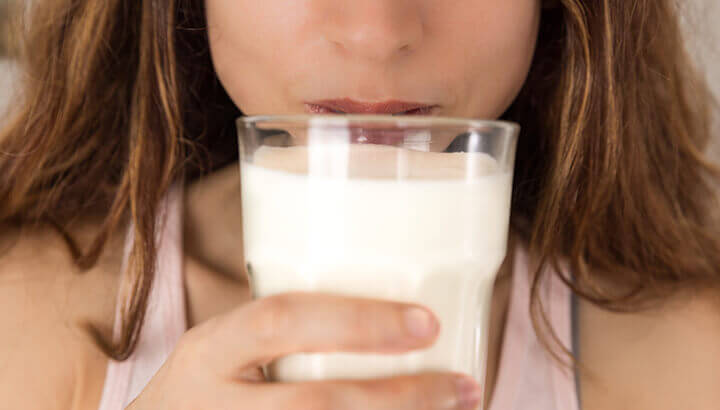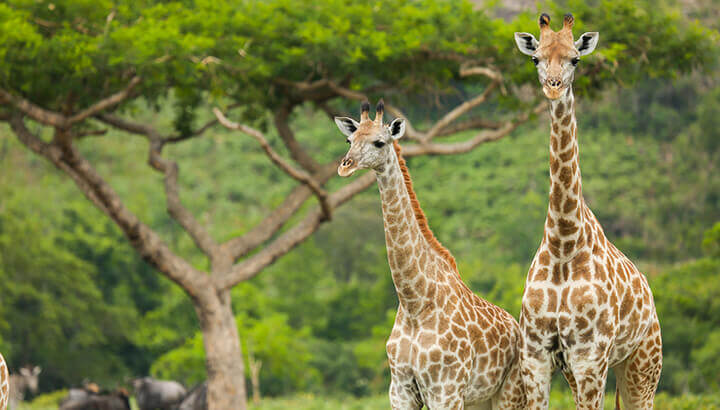
At first glance, the idea of drinking giraffe milk may seem like, well, a bit of a stretch. However, recently I’ve spotted a lot of chatter on the cyberspace landscape about giraffe milk being a new superfood. Admittedly, I think it would be a tall order for it to live up to all the health benefits it supposedly has. However, not too long ago I did a piece on the many advantages of camel’s milk, which got me over the hump, so to speak, about exotic foods.
I learned a lot of fascinating things writing about camel’s milk. For one, studies show that it’s good for diabetics, kids with autism and people with allergies. In fact, it’s far and away better for you than cow’s milk because it’s loaded with complex fatty acids. It’s also an excellent source of probiotics and it’s loaded with antimicrobial proteins that can boost the immune system. It’s even rich in iron, which can help many women who suffer from anemia during pregnancy. Does giraffe’s milk offer comparable health advantages?
What are the health benefits of giraffe milk?

As you might expect, the health data on giraffe milk is spotty and thin. That’s because the animals are extremely hard to milk and very few people — if any — actually consume giraffe milk on a regular basis. In fact, there only one study, which dates back to 1962, that examines its nutritional value.
Back then, researchers found that giraffe milk contained four times as much fat of cow’s milk and higher levels of vitamin A and B12. Of course, conventional health dogma has indoctrinated many people into believing that less fat is better. However, studies have consistently shown that higher dairy fat diets have a protective effect against diabetes.
For instance, a 2005 study by the Bikaner’s Diabetes Research Center found that drinking camel’s milk, which is loaded with complex fatty acids, helped diabetics better manage their insulin levels. And in 2016, researchers at Tufts University discovered that people who consumed relatively high level of dairy fat had a 46 percent lower chance of having diabetes. Presumably, the high-fat content in giraffe milk might afford similar benefits.
Before you go out and look for giraffe milk on your supermarket shelves, it is worth noting that it’s one product that isn’t likely to catch on. The plain and simple fact is that giraffes can’t stand to be milked. Indeed, the researchers in 1962 had to anesthetize one just to get a sample.
Of course, cow’s milk has become something of the norm in most parts of the world because cows are docile and easily milked. However, milk from camels, goats and even buffalos have adherents the world over. Indeed, scientists insist that the milk from virtually all mammals is safe for humans to consume. Apparently, that includes the milk from sea lions and dolphins, though some may find that idea a little fishy.
Giraffes are endangered

Despite being nutritious, giraffe milk is unlikely to become a superfood that benefits human health in a big way. Milking the animals commercially just isn’t very feasible. However, the buzz about the supposed benefits of giraffe milk may represent a different opportunity — a chance for humans to help a species that is currently endangered. For example, according to recent reports, a combination of illegal poaching and habitat loss have decimated the giraffe population by as much as 38 percent over the last 31 years.
Julian Fennessy, who is a co-chair at the International Union for Conservation of Nature, has described the plight of giraffes as “silent extinction” because even conservationists have little awareness of how desperate things are for these graceful creatures.
In a press release, Fennessy said, “With a decline of almost 40 percent in the last three decades alone, the world’s tallest animal is under severe pressure in some of its core ranges across East, Central and West Africa. As one of the world’s most iconic animals, it is timely that we stick our neck out for the giraffe before it is too late.”
Currently, the giraffe population is estimated to stand at 97,500 worldwide, which represents a staggering decline in numbers. Nevertheless, public awareness and concerted efforts by conservation-minded individuals and groups can make a difference. For example, several years ago the number of West African giraffes was thought to be about 50. But animal advocates working with the government of Niger managed to help stabilize the population of this subspecies. Today, there are more than 400 of these giraffes.
What can you do to help giraffes
I asked Dr. Derek Lee, principal scientist at the Wild Nature Institute, about the threats giraffes face and what is being done to help them. He explained that “Wild giraffes are in trouble from deforestation and illegal killing for their meat. To save giraffes, our institute is learning where giraffe populations are doing well and where they are not, and why. We are conducting the largest individual-based giraffe study in the world, using our data to inform land management and community land use planning to ensure the most important places for giraffes are protected and connected.”
I mentioned to Dr. Lee that public awareness about the plight of giraffes is sorely lacking. I asked him how his organization is trying to raise consciousness of the issue. He told me,”We use giraffe-themed, illustrated children’s storybooks like Juma the Giraffe, activity books and posters to teach ecological and social lessons and inspire future conservationists, their teachers, their parents and their communities.”
Finally, I asked Dr. Lee what steps ordinary people can take to help protect giraffes. He said, “I always tell people to become a local giraffe hero by spreading the word about the plight of giraffes among friends, neighbors and co-workers and motivate folks in their network to donate money or time to giraffe conservation groups like Wild Nature Institute. Share and retweet social media posts and stories, and tell their own stories about why giraffes need to be saved. If anyone has a special skill set or talent we welcome volunteer writers, graphic artists, public relations pros and any other person with a gift they want to use for giraffe conservation.”
If you’d like to learn more about giraffes and what you can do to help them, visit the Wild Nature Institute.
— Scott O’Reilly

